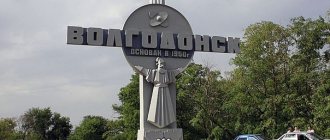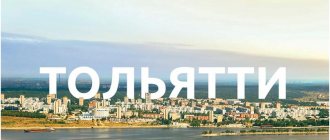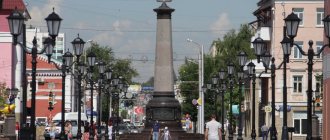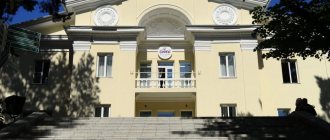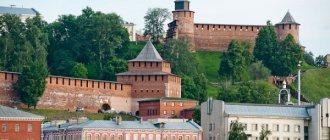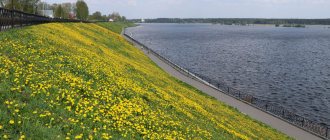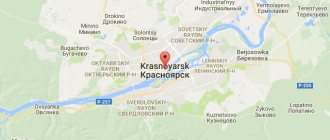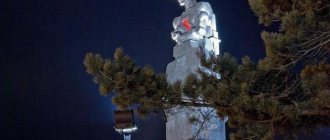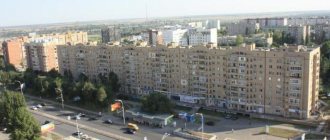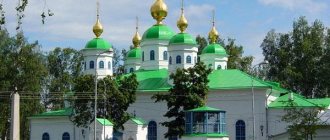You never know where you might end up tomorrow. Today fate brought me to the interesting town of Volgodonsk . And it’s unlikely that I would have explored local attractions if a person dear to me had not lived here.
There is no direct transport here from Nizhny Novgorod. Only by train through Rostov-on-Don, and then by bus or hitchhiking.
Arriving in the city at 3 am, we, of course, went to bed. Deserted streets in the light of the emerging dawn beckoned, but the embrace of a loved one after a long separation beckoned even more.
And it was morning. The first thing that caught your eye when you found yourself in the city in daylight was the varied vegetation characteristic of the southern regions. Fluffy bushes, plane trees, acacias, catalpas (I call them trees with snot, because of the large number of long pods)))) I, a resident of the middle zone, especially liked. I was also pleased with the apricots growing on the sidewalks, the fruits of which are freely scattered under the feet of passers-by. And very close by, at the market, grandmothers are probably selling them.
Catalpa
There you can also find a huge number of all kinds of tomatoes, cheap and very sweet (35-60 rubles).
Volgodonsk cucumber I didn’t take a picture of tomatoes
I was lucky to find a late blooming acacia tree with purple flowers. It was the first time I saw it bloom.
Blooming acacia tree
And the thunderstorms in Volgodonsk are absolutely incredible. Even the hair on our heads stood on end. I have never seen anything like this in my life)))))
When your hair stands on end from a thunderstorm))
Volgodonsk: city attractions
The city of Volgodonsk is one of the youngest cities in the South of Russia, completely built from scratch under the Soviet Union. This is the easternmost city of the Rostov region. It is located between Volgograd and Rostov-on-Don - two large million-plus cities in the Southern Federal District. Volgodonsk, located in the Salsky steppes, is a port of five seas. After all, it is connected by waterways to the Azov, Black, Caspian, White and Baltic seas. The Volga-Don Shipping Canal named after Lenin, to which the city owes both its name and its very appearance, is not the only “construction of the century” in this region. Read more about the history of Volgodonsk and the sights with which it adorned the city.
| Founding date of Vogodonsk: | July 27, 1950 |
| City population: | 171 471 people (2018) |
| City area: | 182.3 km² |
Migration of the population of Volgodonsk
Migration in the city has recently increased and natural population decline has decreased somewhat. Thus, in the city of Volgodonsk in 2022, a population increase was registered due to migration processes, which amounted to 865 people (in 2015 - 110). The number of people who arrived in Volgodonsk in 2015 was 4,891 people, in 2016 - 5,319, the number of people who left the city in 2015 was 4,781 people, and in 2022 - 4,454 people. Most city dwellers migrate to neighboring cities of the Rostov region; in addition, migration flows are noted in Central Russia, the Volga region, the Moscow region and Moscow, the Volgograd region, the Urals, as well as to foreign countries.
Story. City of great construction projects
Attempts to connect the Volga and Don were made by the rulers of the past: the Turkish Sultan Selim II (in 1569) and the Russian Tsar Peter I (in 1697). But, faced with colossal volumes of earthworks, they retreated. In the subsequent history of Tsarist Russia, about thirty projects for the construction of the Volga-Don Canal were put forward, but all of them were shelved and did not reach the start of practical implementation.
Everything changed during the first five-year plans: the grandiose construction of the Volga-Don, begun in the 30s of the twentieth century and forced to stop due to the war, was triumphantly completed by 1952. The location for the settlement of workers involved in the operation of the canal and the Tsimlyansk hydroelectric complex was chosen at the end of 1949 by an interdepartmental commission. July 27, 1950, when the construction of residential buildings began here, became the day the city was founded. Until 1953, it was called simply: Exposelok. Although the name “Volgodonsk” was first heard back in 1938, from the pages of the magazine “Technology for Youth”.
Old part of the city. One of the first houses in Volgodonsk (Lenin St.).
The next major construction project - a chemical plant - took place here in the second half of the 50s. Then, in 1956, the village of Volgodonsk received city status. In 1973, All-Union Komsomol construction projects included the construction of a new Volgodonsk heavy engineering plant "Atommash", and in 1977 - a nuclear power plant. The birth of a new part of the city, on the left bank of the Suho-Solenovsky Bay of the Tsimlyansk Reservoir, is associated with these shock construction projects. And also the appearance of one of the famous monuments of Volgodonsk. A monument in the form of giant keys to new apartments was installed next to the first residential building in the New Town. During these years, the city had regular air connections with Rostov: a passenger Yak-40 took off from Volgodonsk airport three times a day. And since the late 70s, Tu-134 aircraft have operated regular flights from Moscow, Kuibyshev, Sochi, Minvod, Simferopol, Kharkov, Kyiv, Chelyabinsk, Sverdlovsk. In 1975, the average age of the city's residents was 29 years.
Archive photo of the sign being attached, which still hangs today. The first new residents of the first building of the new part of Volgodonsk - a panel high-rise building on Stroiteley Avenue - were the family of bulldozer driver Anatoly Pashko.
From 1990 to 2001, Volgodonsk, like the whole country, was in a deep economic and political crisis. The Volgodonsk NPP, which was 95% complete, was abandoned and industrial enterprises fell into disrepair. In 2001, the first power unit of the nuclear power plant was launched, in 2010 the 2nd power unit was completed and launched, 2009-2014, 2010-2018 - the 3rd and 4th power units were built and launched from scratch. As a result, the station began to produce 15% of the electricity in the South of Russia - for the Rostov and Volgograd regions, Krasnodar and Stavropol territories. Accordingly, the city also came to life, and the city of Volgodonsk itself emerged from a protracted state of depression.
Travel around the world | Traveling the world
There is a small but cozy, green city in the Rostov region with the beautiful name Volgodonsk . This is one of the youngest cities in southern Russia, founded on July 27, 1950 as a settlement for workers of the Tsimlyansk hydroelectric complex. A large industrial and scientific center in the southeast of the Rostov region, a geographical and commercial and industrial center, an energy center in the south of Russia, where one of the largest enterprises is the Rostov (Volgodonsk) Nuclear Power Plant.
The city of Volgodonsk is located in the east of the Rostov region between the largest industrial cities of Rostov-on-Don and Volgograd, and in close proximity to the main cities of large constituent entities of the Russian Federation Stavropol, Krasnodar and Elista.
The symbol of Volgodonsk is “Peaceful Atom”. Model of an atom covered with grapes
Volgodonsk began to be built thanks to the construction of the Volga-Don shipping canal. In 1928, work began on digging the canal, but it turned out to be impossible for the diggers to do it manually. In 1938, the name of the designed village was first announced - Volgo-Donsk. In the 1940s, due to the Great Patriotic War, work on the construction of the canal had to be stopped.
Volgodonsk owes its birth to the construction of the Volga-Don shipping canal. They dreamed of connecting the Volga and Don back in the mid-16th and late 17th centuries. In subsequent centuries, Russian scientists many times touched upon the issue of connecting the Volga and Don, which was a pressing economic problem.
In the 1920s, prospectors and surveyors began working on the route of the future canal. In 1928, they began to lay the canal, but doing it manually turned out to be too difficult. The country began the construction of the Volga-Don only in 1949. Numerous cargo and building materials began to arrive at the village of Tsimlyanskaya. Detachments of hydraulic construction workers came to the largest post-war construction site and began to settle in nearby farmsteads and villages. Soon temporary housing was built for them in the villages of Shlyuzy and Novo-Solenovsky. 149 Cossack villages located in the flood zone were placed on elevated places - the banks of the future Tsimlyansk Reservoir. Simultaneously with the construction of housing, the construction of railway lines from the Morozovskaya and Kuberle stations to the Tsimlyanskaya station was underway. Then the Dobrovolskaya railway station appeared.
The construction of the Volga-Don began in earnest in 1949. Various cargo and building materials began to be brought to the village of Tsimlyanskaya. Detachments of hydraulic construction workers, who were stationed in nearby farmsteads and villages, also began to come here for the large post-war construction project. Temporary housing was soon built for them in the villages of Shlyuzy and Novo-Solenovsky. However, for the construction and operation of the Tsimlyansky hydroelectric complex, an operator village was needed (abbreviated as an expo village).
In December 1949, this area, where the city is now located, was studied by a special interdepartmental commission, which came to the general opinion that this place is the most suitable for locating an expo village.
Monument to Cossack general Yakov Baklanov on the embankment of Suho-Solenovsky Bay
* For reference: Cossack General Yakov Petrovich Baklanov, one of the most colorful heroes of the Caucasian War of the century before last - a gloomy two-meter hero, a tireless persecutor of the highlanders and Turks, an enemy of political correctness and “democracy” in any of their manifestations. He, like many of his contemporaries, achieved military victories for the Motherland and created the glory of Russia.
Yakov Baklanov was born on March 15, 1809 in the village of Gugninskaya (Baklanovskaya) of the Don Army. Yakov Petrovich was brought up on the streets of his native village with the children of ordinary Cossacks. By the age of sixteen, Yakov learned to read, write and count, but best of all he learned to wield a pike and saber, shoot accurately and became a dashing rider.
You can read more about Yakov Petrovich Baklanov here.
Volgodonsk embankment
In parallel with the construction of housing, the construction of railway lines from the Morozovskaya and Kuberle stations to the Tsimlyanskaya station began. Then the Dobrovolskaya (now Volgodonskaya) railway station appeared.
And already in 1950 the first construction sites were formed. Construction of houses began on Volgodonskaya, Lenin, Sovetskaya streets, Pushkin Lane, as well as buildings for the management of hydraulic structures. The construction of residential buildings in the city began on July 27, 1950. This date is considered the birthday of Volgodonsk .
In 1951, the Don was directed along a new channel, and in 1952 the Volga-Don Shipping Canal named after. V.I. Lenin. On May 31, 1952, at 12:55 p.m., the waters of the Volga and Don joined.
The grand opening of the shipping canal took place on July 27. On June 6, the Tsimlyansk hydroelectric power station produced its first industrial current, and on August 22, the hydroelectric power station reached full capacity. At the beginning of 1953, the Romanovsky district executive committee made a petition to transform the workers' village of Novo-Solenovsky into the city of regional subordination of Pyatimorsk and to name the village of exploiters the name Volgodonsk. Although, the village officially received its name only in 1954.
Church of the Nativity in Volgodonsk
Golden domes of the Church of the Nativity
On October 28, 1977, an important event took place in the city of Volgodonsk. The first foundation block of the Rostov Nuclear Power Plant was laid in a solemn atmosphere. On April 25, 1979, the first stone was laid at the site of the proposed construction, which was to become a plant for the production of steam generators and water heating units for the oil industry. However, the first pile of the new plant was driven in on April 1, 1980.
On February 18, 1983, a ceremonial meeting was held at Atommash dedicated to the release of the first Don nuclear reactor. Since 1992, after the suspension of construction of the nuclear power plant and a drop in production at most city enterprises, the city budget became deficit, and the city became subsidized. The decline in production was felt in all areas.
A new stage in the development of Volgodonsk began on April 6, 1998. At this time, the economic situation in the city was critical. The city had a huge deficit. On May 10, Gosatomnadzor issued a license to continue the construction of the first power unit, and on January 19, 2000 - to operate the first unit of the Rostov NPP. On January 21, the first cassette with nuclear fuel was loaded into the reactor, and on February 23, the reactor was brought to the minimum controlled power level. On March 30, the nuclear power plant produced its first electricity. Until 2010, the operating station was called Volgodonsk NPP.
The economy of Volgodonsk began to revive. Volgodonsk is the only city in Russia in the area of which there are hydroelectric power stations, two thermal power plants and a nuclear power plant. Volgodonsk is a transport hub in the east of the Rostov region. The Salsk-Morozovsk highway passes through the city. There is a railway station "Volgodonskaya" on the Morozovsk - Kuberle branch. The Volgodonsk port is of strategic importance, thanks to which the city has access to 100 major ports in 22 countries.
Volgodonsk airport is located 20 kilometers from the city. However, it is currently not functioning.
“Cossack at the Cannon”, sculptor V.P. Polyakov, located on Stroiteley Ave., 20a
“Cossack at the Cannon”, sculptor V.P. Polyakov, located on Stroiteley Ave., 20a
Sculpture dedicated to a girl student. author unknown
Otherwise, I liked the city of Volgodonsk for two reasons:
1) despite the fact that the city is young and was built in 1950, it has a lot of green spaces that create comfort and attractiveness for the city;
2) there are a lot of small and varied sculptures in the city, in almost every courtyard and park square. And each sculpture has its own sculptor and its own story.
Monument to Vladimir Vysotsky and Marina Vladi in Mashinostroiteley Square Monument to Vladimir Vysotsky and Marina Vladi in Mashinostroiteley Park
Source:
You can also read on the topic in the Russian cities
Share link:
- Click to share on Twitter (Opens in new window)
- Click here to share content on Facebook. (Opens in a new window)
Volgodonsk today
Nowadays Volgodonsk is often called the “museum of Soviet urbanism.” Indeed, most buildings, especially in the New Town, were built in the spirit of minimalism, practicality and functionalism, which dominated in the 60s-80s. There are few examples of more picturesque architecture from the Stalin era here. Even when the question arose about building a bridge across the bay to connect the old and new parts of the city, there was a project to build such a bridge that would become an adornment of the city. However, it was eventually abandoned, and in 1976 they began to build a simple and cheap overpass.
The city-forming enterprise is the Volgodonsk (Rostov) NPP.
The climate in Volgodonsk is continental, dry steppe type. Winter is moderately cold, with little snow; summer is hot and sunny. The Tsimlyanskoye Reservoir, formed in 1952 along with the construction of the canal, had a significant impact on the local climate. Spring became longer and colder, but autumn became warmer and milder, and the dryness of the steppe climate was noticeably softened by additional humidity.
Walk around Volgodonsk
But let's walk around Volgodonsk and see what else is remarkable about this southern city.
As I learned, Volgodonsk has two parts - the old and the new city . The old town is the part where the construction of houses and streets began. The new city appeared along with construction, which occurred at the end of the 70s.
Let's start walking through the old part . Straight from our house, well-rested and immensely satisfied with life, we go out onto the main pedestrian street Lenin . Between the two roadways there is a walking boulevard lined with trees - poplars, catalpas, spruces. It looks very picturesque.
Lenin Street
Walking along this boulevard, we find ourselves in the central square - Victory Square , where the main city events take place. Its center is decorated with a stele in honor of the victory in the Great Patriotic War. It depicts front and rear workers.
Victory Square Workers of the rear and front
And from the square we find ourselves in Victory Park , where townspeople walk.
entrance to the park
It's not crowded here on weekdays
The park is decorated with beautiful flower beds, a fountain, an alley of heroes and female heroines with 5 to 10 children.
Flowerbeds in the park
The fountain in the park is also impressive, especially due to the lack of water, as is the case in the lake over which the lovers' bridge stretches. Apparently, in the south it is customary to save water)))
The fountain, although without water, looks impressive.
The lake (or rather the container under it) and the bridge of lovers
Lover's Bridge
Water appears in fountains on Saturday:
The fountain in all its glory
The park has a Ferris wheel and rides, one of which particularly interested me:
Provocative name for an attraction)))
Observation platform, decorated with stone steps:
And the constellation of Hero Cities:
Pypus the hare decided to take a photo with the Rostov star
There are also several cafes and fast food kiosks.
In general, Victory Park made a pleasant impression - a cozy, well-kept place for leisurely walks.
And we move on. Lenin Street continues far ahead. After a few kilometers the next park is Yunost.
And again Lenin Street
It is smaller than the first one, and there are few attractions in it. This is a fountain (again, without water) and a proud deer, which you definitely need to climb on and take a photo. Sitting on it, I thought - it’s strange that the symbol of Nizhny Novgorod stands in Volgodonsk. This reveals a subtle interconnection between cities. In NN itself you can only climb onto a bronze goat, and the deer is not suitable for riding))
I wonder how this fountain looks with water?..
“We will go, we will race on a deer early in the morning...” 
A little further along Lenin Street I find the city administration , in front of which there is a monument to the builders of the Volgodonsk Canal - “Riverman and Worker”.
Opposite the administration there is another beautiful house:
On the way back, we randomly entered the territory of Hospital No. 1 , and were extremely surprised. There is a real park there with flower beds and many different monuments. Oleg, as a native resident of the city, saw them for the first time and was also very surprised. I think it’s nice to be treated in such a hospital)
I noticed a couple of features of this city. Firstly, there are a lot of young people here. Apparently the youth of Volgodonsk itself took its toll. Secondly, many residents, especially girls, are short. With my 170 cm, I seemed the longest among them))). And the third feature - gentlemen, car owners, apparently in order to impress those same young ladies, drive around the city with deafeningly loud music. Sometimes until late at night, which is not the best way to promote sleep. Although, the city is young, what a dream it can be at night
That day came to an end. Tomorrow we will go to the New City and see what interesting things can be seen in another part of Volgodonsk.
Map:
—
+1
The Tsimlyansk Reservoir is a man-made sea. Dobrovolsky outlier
The artificial sea created by the Soviet people, the Tsimlyansk Reservoir, is the main natural attraction of Volgodonsk. This is one of the largest artificial reservoirs in the country, with an area of 2700 m2, a width of up to 38 km, and a depth of up to 30 meters. When it was formed, there were 149 farms and villages in the flood zone, the population of which was transferred to elevated places - the shores of the future Tsimlyansk Sea. Mostly the water here is calm, but during strong periods there are storms with waves three meters high.
The shore of the Tsimlyansk Reservoir.
As part of the Tsimlyansky hydroelectric complex -
Gateways are one of the symbols of Volgodonsk, from which its history began. This is a real architectural monument of the Stalin era. The Tsimlyansk Reservoir is very rich in fish resources, so fish are caught here on a colossal, industrial scale - both officially and, mostly, unofficially.
Gateway No. 14. Volgodonsk.
On the eastern bank of Tsimla there is a unique monument of prehistoric times - Dobrovolsky outlier . These are fossilized imprints of ancient shells, deposits of the Sarmatian Sea, the bottom of which was this area during the era of dinosaurs.
Entertainment and attractions of Volgodonsk
We never tire of repeating that Volgodonsk is a young city, so its attractions must be approached with an age limit. There are no ancient temples or ancient fortresses here, but what is there is worth a visit. Namely: in total there are about 50 monuments of architecture, history, sculptures and monuments, as well as architectural ensembles of Lenin Square, gateway No. 14 and a couple of worthy museums.
There is still some antiquity on the territory of the city - this is the unique archaeological monument “Dobrovolsky Outpost”. This is part of the fairly widespread sediments of the ancient Sarmatian Sea, in which fossilized impressions of shells can still be found.
But let’s start traditionally with museums, where you can get to know the history and culture of Volgodonsk better.
Volgodonsk Art Museum
The Volgodonsk Art Museum is just a young man without a mustache; it appeared in the city back in 1995. However, in a short time of operation, it managed to accumulate more than five thousand exhibits in its funds. In fact, today it is the fourth largest museum of fine arts in the region (after Taganrog, Rostov and Sal). Its collection, of course, does not boast Caravaggio’s masterpieces, but it introduces all visitors to the outstanding works of local artists who tell us about the history of the region, its traditions and characteristics.
Address: st. Lenina, 104. Phone: (8639) 275-520.
Volgodonsk Ecological and Historical Museum
The only ecological and historical museum in the east of the Rostov region can boast of a 40-year history. Today, its rich fund is located in three buildings at once, and one of them opened quite recently, in 2003. This is the “Cossack Kuren of the 19th century”, which opened in the former village of Krasny Yar. Here you can see household items and crafts of the Don Cossacks.
In general, the museum’s collection can introduce guests to rich material collected about the Civil and Great Patriotic War of 1941-1945, in particular, about the participants in the partisan detachment of the village of Romanovskaya. You can learn more about the epic construction of the Volga-Don shipping canal and the Tsimlyansky hydroelectric complex, and the emergence of the Rostov nuclear power plant. The museum also has a collection of Russian and Don icon painting, ceramics and glass from the 17th to 20th centuries.
As mentioned above, the museum consists of three branches:
- st. Lenina, 52; opening hours from 10:00 to 19:00; entrance 50 RUB, schoolchildren 30 RUB, students and pensioners 40 RUB
- st. Rabochaya, 11; from 8:00 to 17:00; entrance 50 RUB, schoolchildren 30 RUB, children under 7 years old 20 RUB, students and pensioners 40 RUB
The Volgodonsk Art Museum is just a young man without a mustache; it appeared in the city back in 1995. However, in a short time of operation, it managed to accumulate more than five thousand exhibits in its funds.
Temples of Volgodonsk
Due to the fact that the Soviet Union is an atheistic state, most of the churches in the city were founded in the early 90s. Notable, for example, is the Church of the Intercession (Protection of the Blessed Virgin Mary), which was founded on the territory of the Rostov Nuclear Power Plant in 2006. Now two large cathedrals are being completed in the city - the Holy Trinity and the Nativity of Christ (the future cathedral of the diocese).
Monuments of Volgodonsk
The locks are perhaps the main monument of Volgodonsk. The history of the city began with them, today life in Volgodonsk cannot be imagined without them, moreover, they are also the most spectacular attraction of the city.
In addition to these colossuses, in the city you can see a monument to the memory of the victims of the Chernobyl tragedy, erected in 2006, a memorial to the count and Don ataman Matvey Platov (hero of the war of 1812), there are memorial signs to the hero of the Chechen war Igor Dudka, Admiral Fyodor Ushakov, and Cossack general Yakov Baklanov.
In 2011, at the entrance to the New Town, a stele appeared in honor of the builders of Volgodonsk. And in the city there is the second monument to Vladimir Vysotsky in Russia.
Embankment, Mound of Cossack Glory, monument to Baklanov
Volgodonsk has a very beautiful embankment, not inferior in picturesqueness and grooming to the embankments of large cities. Here, in the early 2000s, art objects dedicated to the Don Army, on whose ancestral lands the Soviet city was built, were erected. This is the Mound of Cossack Glory and a monument to the famous Cossack general Yakov Baklanov. The equestrian sculpture of one of the national heroes of the Don Cossacks rises 7 meters. And behind this monument there is a five-meter mound made of concrete, with relief images of the history of the Don. Between these art objects are a Cossack saddle and hat.
Monument to General Baklanov and Mound of Cossack Glory.
Ecological and Historical Museum
The history of the Don Cossacks is presented very richly, clearly and interestingly in the Volgodonsk Ecological and Historical Museum (formerly a local history museum, founded in 1969) - one of the largest museums in the region. It is located in three buildings. In the main one there are 12 exhibition halls, each of which is dedicated to the folk culture of the region in different historical eras. The museum collections include more than 70 thousand exhibits from archeology and paleontolia; iconography; rare books and documents; ancient coins and photographs; military relics; works of folk crafts from different times. Since 2003, the museum complex “Cossack Kuren” has been operating - the home and farmstead of the family of a 19th-century Don Cossack, recreated in life-size.
The building of the Ecological and Historical Museum of Volgodonsk.
Museum of the History of Don Folk Culture, Life and Crafts
This museum is also known as the “Cossack kuren of the 19th century”. The museum belongs to the city historical museum of Volgodonsk. The museum is a life-size recreated home and farmstead of a Cossack family. The museums present exhibitions reflecting the features of the traditional culture of the Cossacks and their way of life.
Separate exhibitions are devoted to the peculiarities of folk arts and crafts - hunting, fishing, blacksmithing, wickerwork, carpentry and pottery. Even the museum building itself is an architectural monument of the nineteenth century, with preserved decorative details. Various ethnic and national holidays are held on the territory of the museum.
Art Museum
There is also an art museum in Volgodonsk, where very worthy works of local artists, both popular and honored, and little-known young ones, are exhibited. The permanent exhibition includes a gallery of portraits of honored residents of the city - veterans of the Great Patriotic War, outstanding workers, etc. Most of the paintings presented are made in modern realistic techniques, using traditional materials. Sculpture, graphics, decorative and applied arts, faleristics are also represented. The total area of the art museum's halls is 534 square meters.
Paintings from the collection of the Volgodonsk Art Museum.
Museum of the History of Don Folk Culture, Life and Crafts
This museum is also known as the “Cossack kuren of the 19th century”. The museum belongs to the city historical museum of Volgodonsk. The museum is a life-size recreated home and farmstead of a Cossack family. The museums present exhibitions reflecting the features of the traditional culture of the Cossacks and their way of life.
Separate exhibitions are devoted to the peculiarities of folk arts and crafts - hunting, fishing, blacksmithing, wickerwork, carpentry and pottery. Even the museum building itself is an architectural monument of the nineteenth century, with preserved decorative details. Various ethnic and national holidays are held on the territory of the museum.
Holy Trinity Church
All churches in Volgodonsk were built in the 2000s: no new religious buildings were built in the Soviet Union. The Holy Trinity Church is very beautiful - a snow-white church in the new part of Volgodonsk, on the shore of the Tsimlyansk Sea bay. The architectural appearance of this temple is very rich, designed in the New Byzantine style in combination with traditional Old Russian architecture. Decorated with carved crosses and covered with gold leaf, the domes of the main building of the temple and the bell tower resemble candles in their shape.
Holy Trinity Church is the main church of Volgodonsk.
Small Church of St. Fedor Ushakov and Cathedral of the Nativity of Christ
Small Church of St. Fyodor Ushakov and the Cathedral of the Nativity under construction.
The Small Church of St. Feodor Ushakov was erected in 2011. Next to it, the new Cathedral of the Nativity of Christ is slowly being built with private donations. The small temple looks very solemn, its appearance is designed in accordance with the traditional Russian Orthodox style. The small temple is decorated with gilding and decorative half-columns.
Temples and churches
Believers live in Volgodonsk. On Sundays and holidays they attend services in local churches:
- Holy Trinity;
- Nicholas the Wonderworker;
- Feodora Ushakova.
The architectural heritage of Volgodonsk is the Holy Trinity Church. It was built in the late 90s, and a year after its construction, a capsule containing a message for future generations was laid into the foundation. To decorate one wall with mosaics, local residents worked together to raise money. Later, domes and a cross were built on the roof. Icons with the relics of saints are kept here, and priests recommend visiting the temple for those who are planning to get married. Lovers can pray in front of the image of the faithful Peter and Fevronia of Murom.
Until 2012, construction of the Church of St. Nicholas the Wonderworker continued. It was opened on the Christian holiday of the Intercession of the Blessed Virgin Mary. From 1903 to 1938 there was an old temple on this site, on the foundation of which a new building was built. Inside it is decorated with mosaics and various icons.
The Small Church of St. Theodore Ushakov was built in the Byzantine style. The great naval commander became famous for his pious life and exploits. Next to the building is the Cathedral of the Nativity of Christ, although the temple itself worked even before it. It looks rich and solemn, the turquoise domes are framed by a gilded dome.
Information center of Volgodonsk (Rostov) NPP)
Since 2010, the Volgodonsk nuclear power plant has been called the Rostov nuclear power plant. The main information center of the Volgodonsk NPP was specially built in the new part of the city to inform the population, exchange expert opinions, and conduct scientific events on the operation of the nuclear power plant and nuclear energy in general. The center is located in a modern building “made of glass and concrete” and is open on weekdays from 8:30 to 17:00.
There is an interesting exhibition about nuclear energy in the NPP information center building.
It is famous for its large and interesting exhibition complex. The exhibition includes visual models of the nuclear power plant itself, nuclear reactors and other types of nuclear power equipment in Russia.
Historical facts
Beginning of the 20th century marked by the industrialization of the country. Modern cities were formed and industry developed. In the summer of 1950, Volgodonsk was founded. The reason for its appearance was the construction of the Tsimlyansky hydroelectric complex, a significant facility of the Volga-Don shipping canal.
In the spring of 1950, outside the village of Solnechny, not far from the village of Romanovskaya, they began to clear areas for the construction of workers' dormitories. After 1.5 months, the village began to be built up en masse with multi-storey brick houses.
July 27, 1950 is officially considered the birthday of the city of Volgodonsk. It grew and developed at a rapid pace. A chemical processing plant was built, the port was modernized, and a timber transshipment point was opened. In the 60s theaters, cultural centers, recreation parks were built everywhere, and transport infrastructure was developed.
Pervomaisky district (Nizhny Novgorod region)
After the accident at the Chernobyl nuclear power plant, life in Volgodonsk changed dramatically. Residents went on strike against the construction of a nuclear power plant in Rostov and demanded that construction work be stopped. During the reign of B.N. Yeltsin, industry in the city fell into decay, workers left the enterprises. Spontaneous rallies and strikes broke out.
The last decade of the 20th century. Volgodonsk was in political and economic decline. The nuclear power plant was not completed, plants and factories were closed. Since 2001, life in the city has changed for the better. The construction of the nuclear power plant continued, and the station began producing energy for the southern regions of Russia. The city received a “second” birth.
Monument "Peaceful Atom"
The monument was erected near the building of the information center of the Volgodonsk NPP. It has become one of the main symbols of Volgodonsk, its “calling card”. The sculptural structure is a sculpture of the orbits of elementary particles of an atom, which are entwined with vines.
This monument, created in 1981, originally stood on the square in front of the air terminal of the now defunct Volgodonsk airport. But he didn’t stay there for long and found his permanent “registration” in the middle of the roundabout at the intersection of Kurchatov and Stroiteley avenues.
The Peaceful Atom monument stands in the middle of the circular road and is surrounded by beautiful flower beds.
Why a stylized image of elementary particles in orbit was chosen as the symbol of the city is clear - this is a city of nuclear scientists - a large nuclear power plant and. But vines are added to this symbol for a reason. The traditions of growing vineyards in this region are more than three hundred years old: it is known that even during the reign of Peter I there were extensive industrial vineyards in the Cossack village of Tsimlyanskaya.
The continuation of the glorious traditions of winemaking on the Don is in the neighboring Volgodonsk city of Tsimlyansk. The product range includes classic champagnes (including aged “premium”) and sparkling wines; ordinary “still wines” (including aged “premium” ones), cognacs, liqueurs and aperitifs. The plant considers the year of its foundation to be 1786 - the time of mention of the first documented bottle of “Tsimlyansk sparkling wine”. It is known that the victory over Napoleon was celebrated by the Russian nobility and The generals were celebrated in 1813 in Paris with Tsimlyansk-produced champagne.
.
The modern plant owns its own vineyards located on a vast area along the Tsimlyansk Reservoir. 20 varieties of grapes grow here. Among them are unique indigenous varieties: Tsimlyansky Cherny, Plechistik, Krasnostop Zolotovsky. Wines are produced using four technologies: traditional Cossack; remuage; disgorgement and tank champagne (“Soviet champagne”).
Monuments of the sculptor Motovilov: “Worker and Riverman”, “Cossacks”
In 1953, magnificent monuments of the Soviet era appeared in Volgodonsk, and to this day they are among the main attractions of the city. Their authors were the famous sculptor, Honored Artist of the RSFSR Georgy Motovilov. In front of the building of the Administration of Hydraulic Constructions (now this is the city administration building) a monument to the working class was erected - the sculptural composition “Worker and Riverman”. The pedestal represents the open navigation bridge of a ship. The riverman is holding binoculars, and the hydraulic construction worker is holding a scroll, possibly a construction plan. The prototype of the worker was foreman Georgy Shpachenko, later an Honorary Citizen of the city of Volgodonsk.
Another beautiful monumental composition by Motovilov is located on the northwestern outskirts of the city. It adorns the fifteenth lock of the canal. The monument to the Cossacks consists of two nine-meter tower-columns located on both sides of the last, 15th Volga-Don gateway. There are statues of dashing horsemen waving sabers on rearing horses. The pedestals, 4.5 m wide, are made in the spirit of early classicism and decorated with a paneled belt.
Statues and monuments
Relatively young Volgodonsk is interesting to city guests for its monuments:
- The sign of friendship between Russia and Bulgaria is dedicated to the 100th anniversary of the birth of the Bulgarian figure G. Dimitrov. Made in the form of a large yellow stone of a pentagonal shape. In the center of a kind of star is a portrait of Dimitrov. The memorial sign is located on the street. Morskoy, 68.
- Monument to Pushkin - opened in the spring of 1972. It has a stone base in the form of a book. In its upper part is the bronze face of the poet. Pushkin is depicted sad and drooping, with his gaze directed into the distance. The address of the monument is Pushkin Lane, 10.
- Motherhood - the monument is located next to the city maternity hospital. It consists of a wooden bench entwined with grapes and resembling a tree trunk. A tired woman is sitting on a bench holding a child. The composition symbolizes the fertility of the earth and female motherhood, located on the street. Sovetskaya, 45.
- The monument to the Muromsky spouses was opened in the fall of 2013 near the wedding palace. The author of the project is sculptor E. Derdiyashchenko. A man and a woman stand on a pedestal. Behind the loving couple you can see a pillar with an Orthodox cross and the inscription “the benefactors of marriage Peter and Fevronia.” The monument is located on the street. Lenina, 100.
- Monument to Yakov Baklanov - erected in 2008 on the banks of the Don River, near the city embankment. Made in the form of a mound with bas-reliefs placed on the plane, which depict historical scenes and Don Cossacks. Near the mound there is a horse with a dashing rider. This is a national hero who served in the Russian army for 42 years - Yakov Baklanov.
- Cossack at a cannon - the composition on Stroiteley Avenue is surrounded by a low stone fence. Consists of a cannon and several cannonballs on a stand. A Cossack sits nearby with a ladle in his left hand. He has a gun on his knees and a wide knife in his belt. In front of the Cossack there is a fountain made of rings of different diameters. It seems that the warrior guarding the gun is drinking water drawn from a fountain.
- Monument to the Builders - a 25-meter stele rises on Vesennaya Street. The facility was opened in 2011 as a tribute of gratitude and respect to the builders of Volgodonsk. The stele is directed into the sky, and a proud eagle sits at its very top. At the foot there are construction supplies: a trowel, a hammer, a helmet, and safety glasses.
- Peter I and Dmitry Cantemir - the monument was built in 2022 in Yunost Square. The author of the sketch is A. Vorontsov, the sculptor is P. Slobodchikov. Peter the Great holds a cup filled with berries. Cantemir holds a large bunch of grapes in his hands. Attached nearby is a table telling about the friendship of these famous people. The monument claims that it was from Moldova that grape bushes were brought to the banks of the Don. Since then, friendship between Russians and Moldovans began.
- Cossacks - a sculptural composition rises in the northwestern part of the city at the canal lock. Combines 2 9-meter columns and statues of horses with dashing riders. The wide pedestal is made of granite and decorated with inserts.
Monument “Love” and Mechanical Engineers Square
Sculptural composition “Love” in Mechanical Engineers Square.
A review of the main monuments of Volgodonsk would be incomplete without the widely known sculptural composition “Love”, created in 1984 in Mashinostroiteley Park. The eight-meter “Love” monument is made of stainless steel and copper.
Soon the composition “Love” began to be considered an unofficial monument to Vysotsky, identifying the man with the guitar with him.
Victory Park
Victory Park is the largest and one of the most famous park complexes in the city, designed for cultural recreation and public events. Located in the old part of Volgodonsk. There are all kinds of attractions here, making the park an ideal place for families with children. There is also a picturesque art object in the park: the Bridge of Love.
The park also houses monuments dedicated to the Great Patriotic War. In particular, the Alley of Hero Cities and Cities of Military Glory. Each star here is dedicated to the heroic city of the USSR. Rostov-on-Don is especially highlighted. On May 9 and June 22, rallies and other commemorative events are held in Victory Park.
TOP-6 – what to see in Volgodonsk in 1 day
There are many places in Volgodonsk that have become calling cards of the entire region. Some of them are associated with large production facilities, such as hydroelectric power stations and nuclear power plants, others – with the Great Patriotic War.
Tsimlyansk Reservoir
Coordinates on the map: 47.655945, 42.275105.
One of the largest reservoirs created by human hands. The reservoir has become a kind of crossroads for a dozen rivers rich in fish, and the ruler of the nearby fields. A giant bowl waters the earth and more than three million inhabitants.
From here, electric current flows through the wires from one of the most important hydroelectric power stations in the country. The creation of Soviet builders even influenced the local climate: now the winter cold comes here later and does not give way to a warm spring for a long time.
Alley of Golden Families
Address: Park of Family, Love and Fidelity.
Next to the Volgodonsk registry office there is the most effective promotion of family values. The alley is a series of sculptural compositions. Each depicts crossed gold rings, in the center of which are photographs of married couples celebrating their sapphire wedding (45 years).
The alley symbolizes the strength of family ties and shows that all difficulties and adversities can be overcome with love and loyalty. The example of men and women who went through all the hardships of family life and maintained their marriage is intended to inspire young, inexperienced couples and spouses who are experiencing a crisis in their relationships.
Alley of Military Glory
Address: Victory Park.
Located in Victory Park. At the entrance to the alley, visitors are greeted by a bas-relief with its name. On the reverse side of the bas-relief, a Soviet liberator warrior is carved, with a star shining above his head.
The two paths are separated by a number of photographs of veterans of the Great Patriotic War and modern local wars. Under the photo there are inscriptions indicating the names of soldiers and officers, as well as the years and places of their service.
Memorial Glade of Hero Cities
Address: Victory Park.
Memorial installation of incredible beauty and symbolism in Volgodonsk. From the observation deck there are red paths, each of which ends with a shiny star with the name of the hero cities. Under each star there is a capsule with earth from the city indicated on the sign. In 2010, another star lit up in the horizon of memory - Rostov-on-Don.
Garden of Memory
Address: Victory Park.
Another beautiful memorial in Victory Park and the main meeting place for veterans. Twice a year - on Victory Day (May 9) and on the Day of Remembrance and Sorrow (June 22) - rallies are held here. At the entrance there is a sign in the form of a funeral wreath with the inscription.
The garden consists of two thousand trees. Each one was planted by relatives of those who never returned from the war. Every plant here is literally watered with the tears of widows, orphans and mothers. The idea of a garden is deeply symbolic, because a tree is life. The soldier is no more, but the tree grows and life goes on. Despite the grief, people still have hope for the future.
Vologda NPP Information Center
Address: Kurchatova Avenue, 22.
Volgodonsk received the nickname “the city of nuclear scientists” for a reason. One of the largest nuclear power plants in the country is located 16 km away. For local residents, the issue of peaceful and safe use of nuclear energy is more important than for anyone else.
After the horrific Chernobyl accident, people were concerned about plans to build a nuclear power plant in their area. The Atommash enterprise was on the verge of closure. An Information Center was created to educate and reassure the population.
Today the Center hosts scientific forums, seminars, and conferences on nuclear energy issues. There are exhibitions that clearly explain to visitors how nuclear energy is produced, how reactors are constructed, and how safe the operation of nuclear power plants is.
Yunost Park
Another beautiful park in the old part of the city - Yunost Park was founded in Volgodonsk in 1952 and for the first decades it was one of the main centers of cultural life, concerts, discos, and festive events. Now it is just a good place for walks and family recreation. There is a bas-relief monument to Viktor Letsko, a renowned master of aerobatics.
Old arch at the entrance to Yunost Park
Children's theater school
The building of the Children's Theater School in Volgodonsk.
The unique Children's Theater School is the only one in the Rostov region and has been operating in Volgodonsk for several decades. Children from 4 years old study here. Upon completion of training, the graduating child is issued a state diploma. The school is located in a beautiful building of Stalinist architecture.
